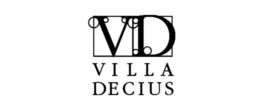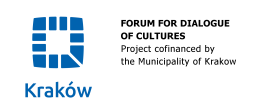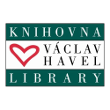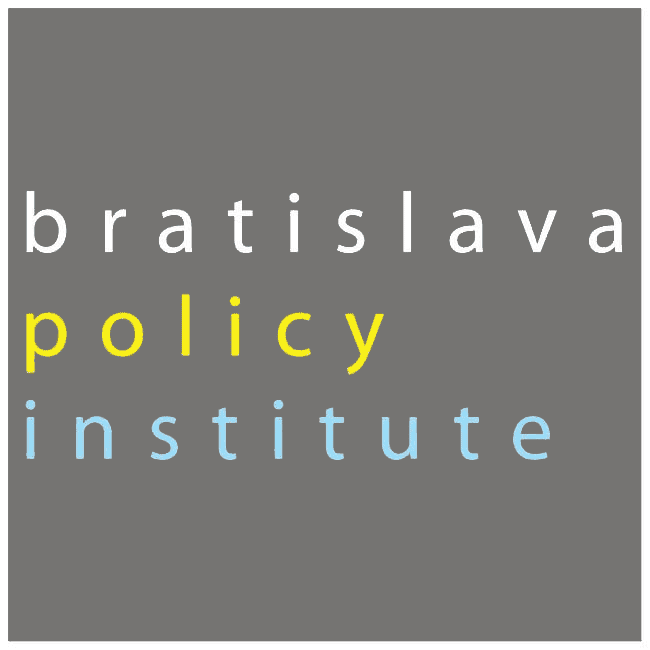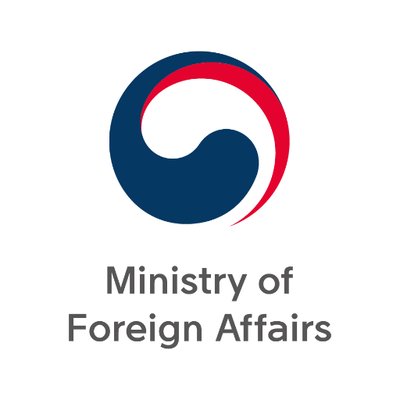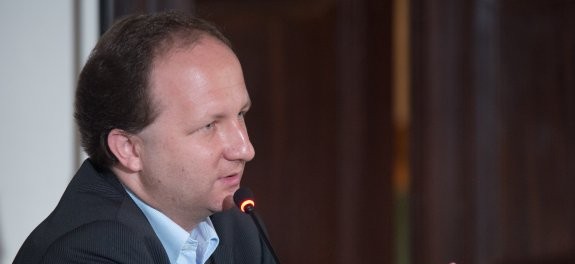
The fourth day of this year’s edition of the Visegrad Summer School saw a shift in focus towards modern contemporary art. The first lecture of the day hosted by Andrzej Szczerski focused on the Cultural heritage of 20th Century modernization in Visegrad countries. The lecture was taught in an interactive manner with imagery being one of the focal points of the lecture. Mr. Szczerski focused on the inter war years in Europe and the modernization that occurred during this period. He primarily focused on three different regions: Gdynia Poland, Bohemia-Moravia in Czech Republic and also the Baltic states. Beginning with Gdynia, he skillfully outlined the modernizing impact of the inter-war years on the region, utilizing images and examples to further his message. He outlined how a new urban middle class culture had evolved in Gdynia and he used an abundance of images to emphasis his point. In addition to this, he explained how during this 15 year period the city had formed a new identity based on maritime ‘’adventures’’. Gdynia had opened itself to the world through modernization and this lecture perfectly illustrated this new found openness.
The lecture quickly shifted focus to the Bohemia-Moravia region and in particular on the famous shoemaker Tomáš Baťa. It was explained in an interesting manner how he transformed the region during the same period mentioned earlier. He constructed complexes around his factory which essentially created a new city! In Moravia, he built a number of incredible buildings and the modernizing impact in the region meant that it had the most cars per capita across the whole nation. Bat’a even established his own construction company such was his enthusiasm for expansion during this period. Szczerski explained how the success of this venture even led to the creation of a parade on May 1st titled ‘’Parade of Labour’’. Another bow to the feather of Mr. Bat’a was his love of advertisements, he established many unique logos during this period and fortunately the crowd were able to watch a video of one of his shoe advertisements which drew much laughter from the fascinated participants. After finishing with Bat’a, the lecture shifted towards the Baltic region again during the inter-war period. Mr. Szczerski cited the architecture constructed in Estonia, Latvia and Lithuania as symbolic of this period and once again he reiterated the impact modernization had on the construction of these new buildings and monuments. Providing images throughout, Szczerski expertly managed to involve the audience on every aspect of the lecture which in turn contributed greatly to its overall impact. Once again the participants were universally satisfied by the quality of lecturing and the imagery on view, will certainly last long in the memories of many.
 The second lecture of the day was suitably titled: Made in Visegrad. Urban Art. Unusually the lecture was divided into two parts due to two different lecturers examining contrasting effects of the title above. Firstly, Ewa Malgorzata Tatar gave a lecture on contemporary art focusing in particular on the social art project called The Fin sage of the Stadium- X realized by the Laura Palmer Foundation and its following stages. The stadium that became one of the symbols of Euro 2012 last month has a very interesting history, from being a sports symbol of new socialist Poland in the fifties, though to its decline after ’89 and becoming Jarmark Europa – huge open-air trading market for indigent citizens of Warsaw until its likwidacje for the building of the new football stadium over the destroyed one. The project was devoted mainly to the Vietnamese population who has made Poland their home and the stadium was their place of work. Opening her lecture by explaining how Vietnam had an ambivalent relationship with other communist countries, it was confirmed that there are 30,000 Vietnamese living in Poland today. This brought looks of astonishment as nobody present envisioned such a vast number of Vietnamese living in Poland today. Moving on from this Ewa outlined how the old football stadium in Warsaw was used to host a Vietnam celebration whereby local customs could be enjoyed for all who had never experienced the Vietnamese culture first hand. It was essentially a nostalgic experience for the Polish Vietnamese and an art exhibition was held honoring their presence. Certainly unique, this lecture provided much room for thought for many of the participants and evoked much debate among the audience as it drew to a close.
The second lecture of the day was suitably titled: Made in Visegrad. Urban Art. Unusually the lecture was divided into two parts due to two different lecturers examining contrasting effects of the title above. Firstly, Ewa Malgorzata Tatar gave a lecture on contemporary art focusing in particular on the social art project called The Fin sage of the Stadium- X realized by the Laura Palmer Foundation and its following stages. The stadium that became one of the symbols of Euro 2012 last month has a very interesting history, from being a sports symbol of new socialist Poland in the fifties, though to its decline after ’89 and becoming Jarmark Europa – huge open-air trading market for indigent citizens of Warsaw until its likwidacje for the building of the new football stadium over the destroyed one. The project was devoted mainly to the Vietnamese population who has made Poland their home and the stadium was their place of work. Opening her lecture by explaining how Vietnam had an ambivalent relationship with other communist countries, it was confirmed that there are 30,000 Vietnamese living in Poland today. This brought looks of astonishment as nobody present envisioned such a vast number of Vietnamese living in Poland today. Moving on from this Ewa outlined how the old football stadium in Warsaw was used to host a Vietnam celebration whereby local customs could be enjoyed for all who had never experienced the Vietnamese culture first hand. It was essentially a nostalgic experience for the Polish Vietnamese and an art exhibition was held honoring their presence. Certainly unique, this lecture provided much room for thought for many of the participants and evoked much debate among the audience as it drew to a close. The second part of this lecture was given by Tomáš Rafa and was conducted through video. With no real interaction from Mr. Rafa, the audience was presented with a series of videos highlighting different topical issues throughout Central and Eastern Europe. This style of work is unique in itself and Mr. Rafa explained that he works independently and therefore hopes that each person who views the videos can make up their own minds about its content. The lecture featured a series of short videos on a wide range of issues including; a feature on the Roma population in Slovakia and the struggles they face, Fascist protests in Poland, Gay pride parade in Budapest, Euro 2012 violence in Warsaw and protesting in Prague against political corruption. Each short clip provided the audience with the material that words simply could not replicate. Allowing the audience to interpret each video as they would see fit, Mr. Rafa faded into the background for much of the session, which allowed all present to fully comprehend the videos that were being shown in front of them.
The second part of this lecture was given by Tomáš Rafa and was conducted through video. With no real interaction from Mr. Rafa, the audience was presented with a series of videos highlighting different topical issues throughout Central and Eastern Europe. This style of work is unique in itself and Mr. Rafa explained that he works independently and therefore hopes that each person who views the videos can make up their own minds about its content. The lecture featured a series of short videos on a wide range of issues including; a feature on the Roma population in Slovakia and the struggles they face, Fascist protests in Poland, Gay pride parade in Budapest, Euro 2012 violence in Warsaw and protesting in Prague against political corruption. Each short clip provided the audience with the material that words simply could not replicate. Allowing the audience to interpret each video as they would see fit, Mr. Rafa faded into the background for much of the session, which allowed all present to fully comprehend the videos that were being shown in front of them.
Offering no trace of bias these videos were taken from an independent perspective and reflected Mr. Rafa’s craft in a truly unique and engaging manner. Each video drew contrasting emotions from the enthralled audience, some brought howls of laughter while others left gasps and cries of anguish fill the hall. Nevertheless, the reaction to all inside the hall to Mr. Rafa’s lecture was one of acclaim and admiration. Once the videos had finished a rapturous applause greeted Mr. Rafa whereby he explained the dedication involved in producing such clips and he then offered his own take on something he truly loves to do for a living. Some interesting questions were then raised by participants, and a healthy debate ensued, but ultimately each participant was delighted with how the videos were presented and all felt fortunate to be able this experience from the comfort of the hall and thankfully not in the midst of some of the more violent clips presented.
Links to both artists’ projects can be found at these sites:
http://www.stadion-x.pl/
http://your-art.sk/
http://www.newnationalism.eu/

